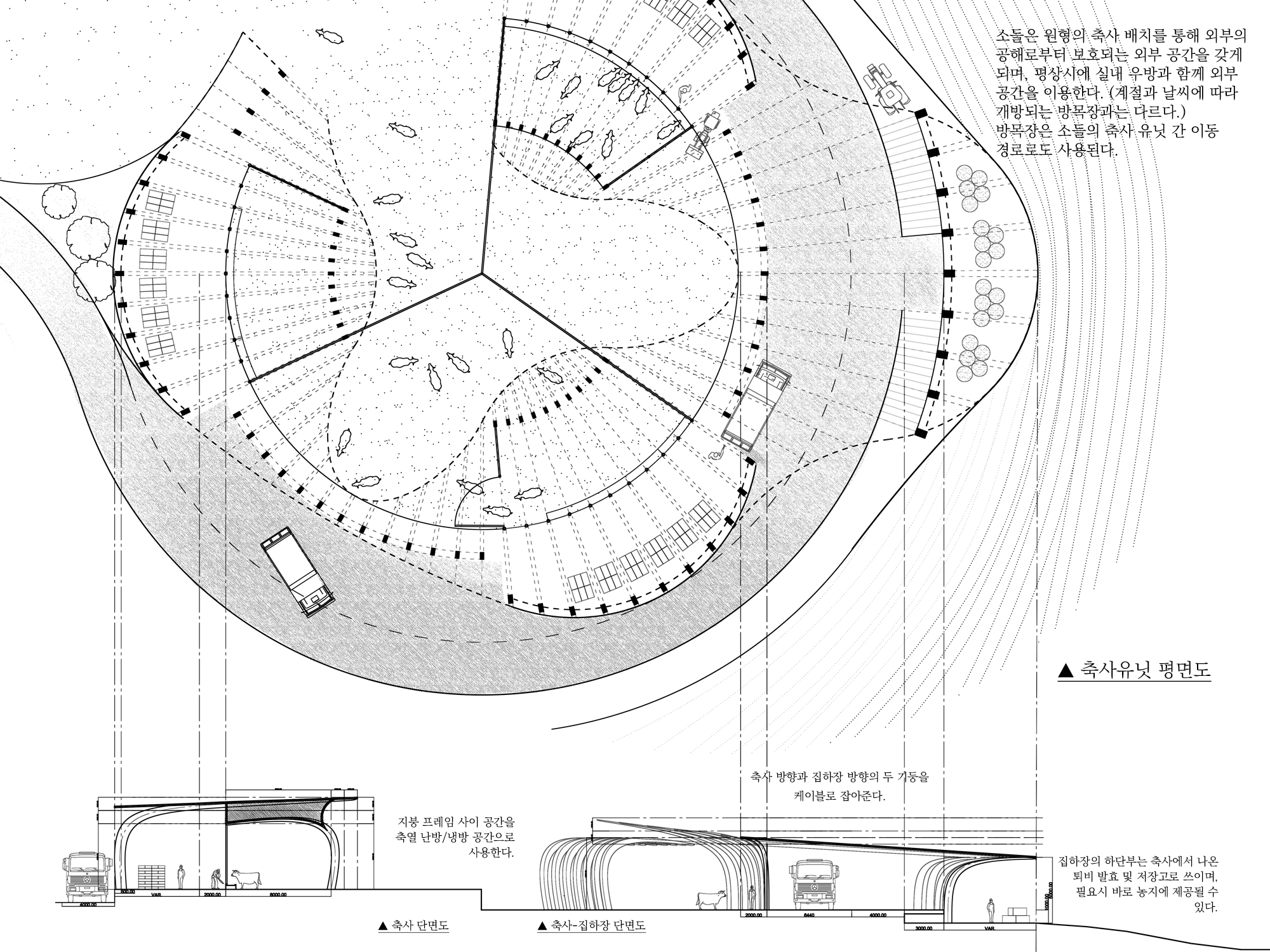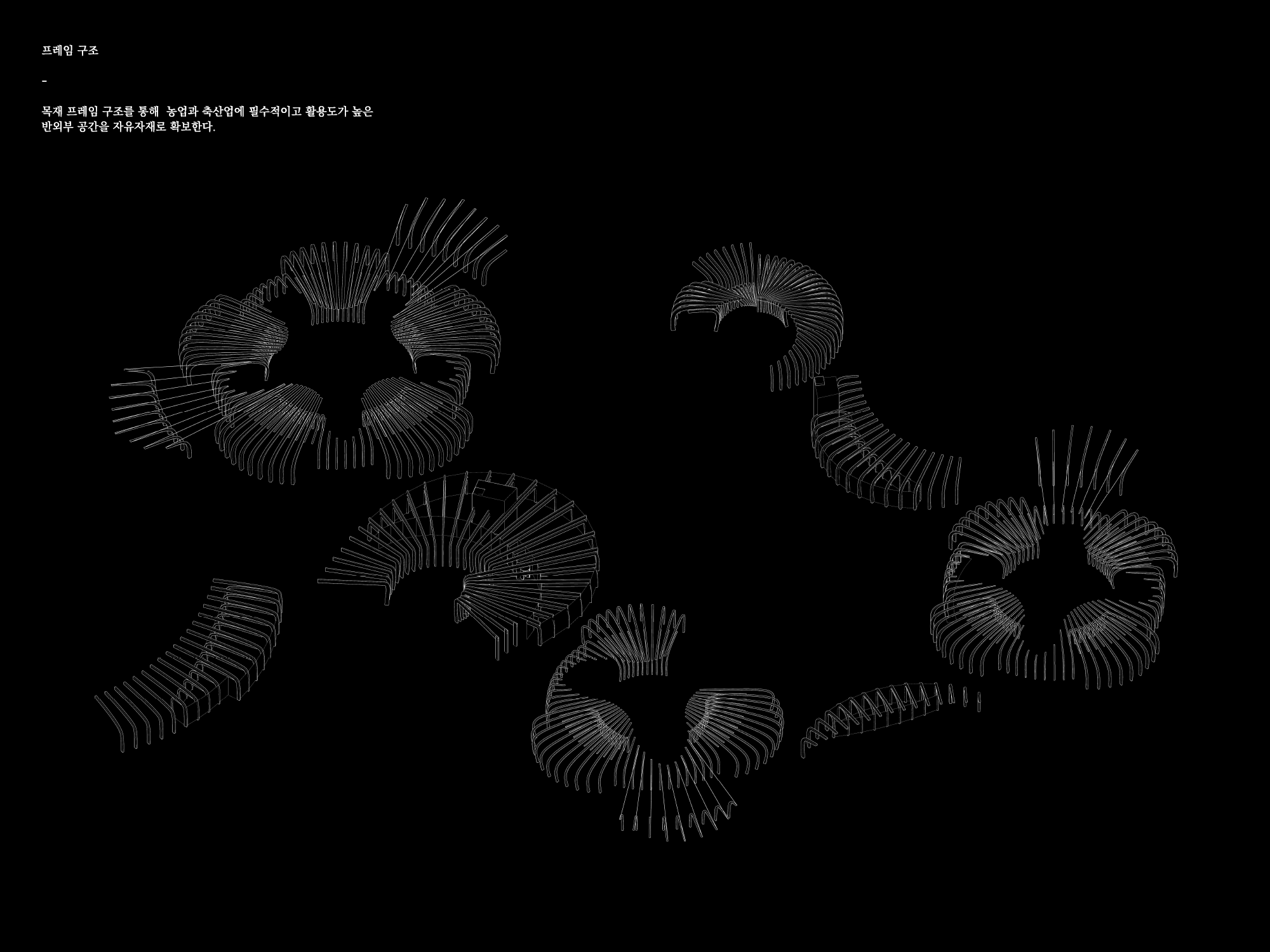생산의 장: 생산을 마주하다
The Field of Production
도시는 소비의 장소다. 그리고 소비의 대규모화에 따라, 도시 밖 생산의 공간은 점점 커지고 있다. 도심을 조금만 벗어나도 마주치는 커다란 공장, 유통 창고, 온실, 축사까지, 수많은 생산의 공간은 도심 밖의 삶에 가까이 들어와 있다. 생산은 도시 밖의 삶과 공간에 많은 비중을 차지함에도 불구하고, 그 무엇보다 삶에서 분리된 공간으로 존재한다. 그렇게 생산은 우리의 눈에서 멀어지고 방치된 생산의 환경은 점점 악화된다. 생산으로부터 눈을 돌린 채, 사람들은 전원의 낭만을 도시 밖에 투영하고, 전원의 낭만을 충족시킬 풍경으로 남아있기를 바란다. 하지만 생산은 감출 수 없는 것이며 삶의 근본이다. 앞으로의 전원에는 지금은 아무도 보고 싶어하지 않는 생산이 자연환경, 거주와 함께 풍경을 만드는 요소가 되어야 한다. 가까이 있지만 사람들과 일상에서 멀어지고 분리된 생산이 일상 속에 들어올 때, 비로소 우리는 생산을 마주하고 함께 살아가게 된다.
수많은 생산의 공간 중 우리의 삶에 필수적이지만 외면되고 있는 농촌의 열악한 1차 생산 환경에 주목한다. 농촌의 공간과 주민의 일상에서 큰 부분을 차지하는 만큼, 생산은 농촌에서의 삶과 환경에 기여해야 한다. 강원도 홍천군에 위치한 폐업된 농공단지 대지를 활발한 생산의 장으로 바꾸어, 주민들의 생산 활동을 지원하면서 유통-축산업-농업이 통합된 농촌의 생산의 경관을 제안한다.
City is a place of consumption. And as consumption grows on a massive scale, the space for production outside the city is growing massive too. Many production facilities, including large factories, distribution centers, warehouses, greenhouses, and barns, are close to rural life. Although production accounts for a large proportion of life and space outside the city, it exists above all as a separate space from life. Production is out of our sight and the environment of neglected production is getting worse. Turning away from production, people project the romance of rural and hope rural to remain as ‘beautiful landscape’. But production is fundamental to life. Production, which no one wants to see now, should be a factor in creating a landscape with environment and residence. It is only when close but away from people and separated production enters the daily lives that we face production and live together.
The poor primary production environment in rural is the main theme of the project. Production should contribute to rural life and environment, as it accounts for a large part of rural space and the daily lives of residents. By turning the closed industrial complex site located in Hongcheon-gun, Gangwon-do into an active production site, this project proposes a landscape of rural production that integrates distribution, livestock, and agriculture while supporting residents' production activities.










